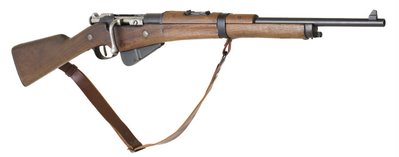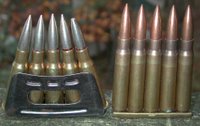
During the days of Prohibition, lucrative profits to be made in the alcohol business led to increasing sophistication among the gangs who trafficked in it. Bullet-resistant body armor had made great strides in the trenches of France during the Great War, and was adopted by some gangsters. More significantly, the widespread availability of the automobile meant that the new criminals were fleeing crime scenes behind sheet metal auto bodies moving at 40, 50, or even an astounding 60 miles per hour. With longer ranges and harder targets becoming more common, law enforcement began to find that the .32 S&W Long, .38 S&W, and even the newer .38 Special were inadequate for their needs.
Smith & Wesson responded by developing a new .38 S&W Special round, loaded to much higher muzzle velocities. This gave a flatter trajectory at longer ranges as well as more punch against hard targets, and was referred to in marketing as the ".38 Super Police". It was soon apparent that this round would be detrimental to long service life in their .38 (or "K") frame revolvers, and so the large .44 (or "N") frame revolvers were adapted to shoot the smaller bore round. The new large-frame .38/44 revolvers were introduced to the market in 1930 and 1931, respectively, as the "Heavy Duty" (fixed sight) and "Outdoorsman" (adjustable sight) models, and these were a key stepping stone to the development of the .357 Magnum cartridge in 1935.
The revolver pictured above has led a colorful life. It was manufactured in 1936 as a fixed-sight ".38/44 Heavy Duty". At some time a "Mr. Middleton" purchased it and, after the war, sent it to Jim Clark in Louisiana to be transformed into a Bullseye gun. Adjustable sights from Micro were expertly fitted, the hammer spur was gas-welded up from a narrow projection into a wide and finely checkered pad that juts noticeably to the left for ease of thumb-cocking, and the trigger was tuned to a fare-thee-well. Lastly, the owner had his name etched in nicely-done cursive letters on the sideplate. After he passed away shortly after the millennium, his gun languished in a trade-in case at a gun shop before I found it, passed over by kids who didn't know what they were looking at.
Smith made just over 11,000 .38/44 Heavy Duties before WWII, and even an ugly one with issues will bring close to $200. For a really nice example, expect to pay $800 or more and (as with all pre-war Smiths,) if it's Like-New-In-Box with the tools and whatnot, the sky's the limit at an auction.








































